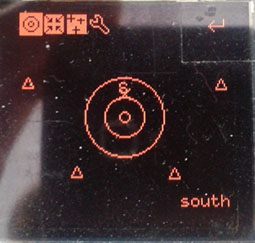 With the advent of electronics in everything, amateur astronomy has never been easier. Telescope mounts that point in the direction of any astronomical object automatically have been around for decades, and the Telrad – a device that paints 0.5, 2, and 4 degree diameter circles in your finder scope’s field of view are available if you’re just too cool for letting a robot do your job. [Christoph]’s explorad takes the concept of a Telrad and adds a somewhat more electronic twist: it still displays the field of view circles, but adds highlighting of interesting astronomical objects from a custom telescope mount, a huge database, and a few sensors.
With the advent of electronics in everything, amateur astronomy has never been easier. Telescope mounts that point in the direction of any astronomical object automatically have been around for decades, and the Telrad – a device that paints 0.5, 2, and 4 degree diameter circles in your finder scope’s field of view are available if you’re just too cool for letting a robot do your job. [Christoph]’s explorad takes the concept of a Telrad and adds a somewhat more electronic twist: it still displays the field of view circles, but adds highlighting of interesting astronomical objects from a custom telescope mount, a huge database, and a few sensors.
By far the biggest challenge to any homebrew finder of astronomical objects is figuring out where the observer is. Not only does [Cristoph] need to take into account the location on Earth (GPS helps with that), but also where North is (electronic compass), where the telescope is pointing (optical encoders on a two axis mount), but also the universal time and current sidereal time. Living on a rotating planet that orbits a sun makes for a lot of code.
The current progress on the star finder to beat all star finders is a bit of code that draws the ‘telrad circles’ and displays placeholders for each patch of sky with a small triangle. Tilting the device or turning the azimuth pot moves these triangles and loads new ones on the fly. Now the name of the game is a sky object database for all the astronomical objects [Cristoph] wants to view.














Magnetometers are a real pain in the ass
amen.
Though, if you know enough of the night sky to locate and record the position of three bright stars against the position of the two axes of the scope you can dispense with having to know (North, Sidereal Time, Universal Time, Latitude or Longitude). You just then so a ‘simple’ spherical transform from the coordinate system of the scope to the one for the sky (RA, DEC).
I’m surprised that there aren’t more systems like that, effectively doing pattern matching of the sky of what can be seen.
Okay, there’d need to be fairly heavy restriction to reduce the search space such as not zoomed in too much (to ensure there are enough key stars in view) but with a GPS location, exact time and approximate direction, would it not then be searchable?
Yes, what you’re suggesting is called plate solving. Check out astrometry.net
Astrometry.net – http://astrometry.net/ – takes the sources in an image and uses quadruples of stars to make a geometric hash code. It might be suitable to identify the location of a pointing.
Modern technology really HAS made amateur astronomy much more accessible. All you have to do is google your zodiac, and it can give you your charts and tell you what to expect for years to come instantly. It’s never been easier to find out when Mercury will be in retrograde.